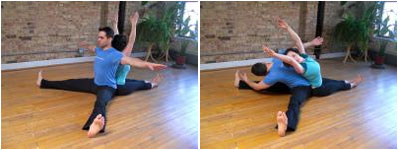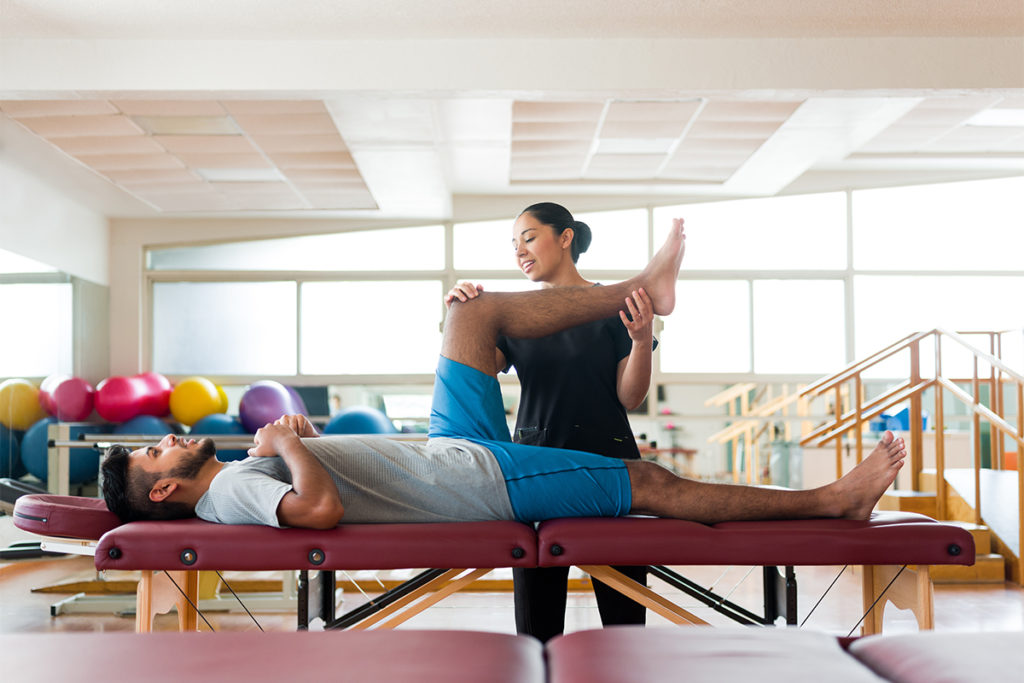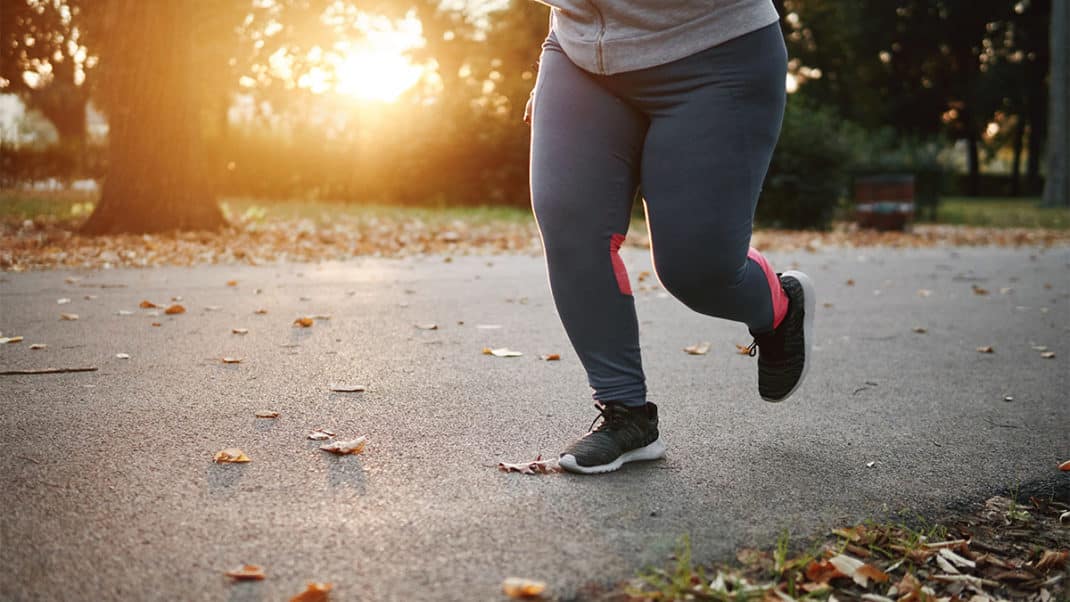Partner Pilates
Help clients strengthen their communication skills while strengthening their cores.
In today’s electronic age, it’s possible to move through life without giving much thought or attention to the health of our interpersonal relationships. As Pilates practitioners we try to keep ourselves and our clients strong, flexible, balanced and empowered. However, we must ask ourselves: Do we give as much attention to our outer connections as we do to our inner connections?
Partner Pilates is an innovative way for you and your clients to harmonize those inner and outer connections. While you enjoy the physical benefits of a Pilates workout, you simultaneously develop communication skills and learn about yourself as a partner. If you’re like most people, you have dozens of interpersonal relationships—business partners, bosses, employees, clients, children, etc. Partner Pilates teaches you how to “tune in.” This ability to listen and effectively sense another person improves teaching skills and receptivity and carries over to every aspect of your life.
The Case for Partnering Up
The physical self is often a mirror of a person’s mental and emotional state. For example, when clients are highly strung, you can see it in their bodies. They may carry tremendous tension or have a “fixed” idea of what they need to do during a session. They may believe they’ll have control if they hold on really, really tight. On the flip side are more apathetic clients. They may have a general weakness, hypermobility or perhaps a lack of determination or drive. Most people fall somewhere along the spectrum. Practicing “give and take” partner exercises can bring a client’s sense of control (or lack thereof) into balance. In much the same way that Pilates equipment provides assistance and resistance, Partner Pilates helps participants find the proper muscles to execute an exercise effectively. Thanks to the resistance provided by another person, participants are forced to engage muscles and avoid relying on momentum.
Practicing Partner Pilates helps develop the balance of give and take. Perhaps you tend to be more assertive and you gravitate toward a more dominant role. Maybe you are more passive. These exercises will not only expose those tendencies; they will also require you to step out of your comfort zone, either to take more control or to release the reins and follow someone else’s lead. Within each exercise, both partners act as agonist and antagonist, constantly reiterating the theme: give control, take control.
Structure and Feedback
In a Partner Pilates practice, structural and movement imbalances become just as apparent as communication imbalances. Pilates equipment enhances exercises by providing structure, limits and feedback. Partner Pilates also provides feedback, but in this case, the apparatus is the human body and the feedback is verbal. For example, when sitting back-to-back you’ll notice where your spines connect, where there is extra space or if one side is more connected than the other. You can then tell each other what you are feeling and explore ways to get into balance: “I think you are leaning into me a little too much” or “I feel more resistance from your right foot than from your left.”
The moves can be accomplished only when both partners are tuned in and communicating. The exercises, which range from soothing and centering to acrobatic and demanding, provide strengthening and stretching benefits to both partners at the same time. They usually include a healthy dose of laughter and fun as well.
Ready to give Partner Pilates a try? Before you begin, here are some safety tips:
- Partners should be careful not to attempt exercises that are beyond their individual strength or balance capacity.
- As with any exercises, it is important to save enough energy to get out of positions safely and with proper form. If you wait until your last drop of energy to let your partner know you’re losing balance or strength, it’s probably too late.
- Supporting the weight of someone much larger than yourself is not recommended. Otherwise, Partner Pilates is accessible to any healthy body.
Connecting the Spines
We begin every Partner Pilates session by simply tuning in. This provides an opportunity to get a feel for the other person and to break the ice.
Position. Back-to-back.
Instructions. Partners sit with eyes closed, feeling their own spine against their partner’s. Adopting a common breathing pattern that is comfortable for both, they spend several minutes in this exercise. This primary connection will carry them through the other exercises.
Partners who are enjoying this can start playing with “mirror movement”: moving spines as though they were glued together; side-bending or rolling forward and backward; adding arms. Partners take turns leading and make sure movement stays in sync.
Saw/Twist-Back
Position. Back-to-back.
Instructions. Partner A opens legs and reaches arms out to sides, preparing for saw. Partner A keeps legs straight and together.
Action
- Partner A rotates to right, reaching left hand toward outside of right foot. Back arm reaches around partner, and palm presses up toward ceiling.
- Partner B extends arms toward ceiling, continuing into spinal rotation and extending along curve of partner A’s body.
Imagery. Spines spiral together like double helix or spiral staircase.
Benefits. Partner A is being coaxed further into stretch while having to use additional abdominal strength to support partner B’s weight. Partner B is able to explore challenging extension/rotation action in more passive way.
Double Leg Stretch
Position. Supine, connecting at soles of feet. For proper spacing, each person should be able to bend knees in toward own body without lifting bottom off floor.
Instructions. Warm-Up: Partners practice bending and extending legs, while keeping head down (as in footwork on reformer). Movement is smooth, gliding and symmetrical. Feet travel in direct line, parallel to floor.
Action
- Both partners flex torsos.
- Partner A begins with legs in toward chest and hands on shins (exhale).
- Partner B begins with legs extended and arms overhead (inhale).
- Partners continue on, breathing and alternating roles.
Imagery. When legs are in toward chest, air is literally being “pushed” out by the action. When legs are extended, it helps to imagine they are being pulled long by other partner, in same kind of way that lungs are “pulled” down by diaphragm.
Tip: Keep abdominals “hollowed out,” and find the agonist-antagonist balance of power with partner.
Elephant/Handstand
Position. Partner A places hands and feet on floor and straightens legs into downward-facing dog position. Partner B places hands in front of partner A’s, then steps one foot at a time onto partner A’s back, placing balls of feet on either side of sacrum. Partner A will look like an upside-down “L.”
Action. Once solid scapular connection has been established (shoulders are connected through back and not elevated in shrug), both partners begin lifting one leg (same leg) at a time.
Benefits. Partner A receives deeper hamstring stretch and more spinal elongation provided by partner B’s weight. Partner B enjoys upper-body strengthening and inversion benefits, as when this move is performed on high barrel. (Of course, barrel doesn’t provide the negotiation and communication that a living, breathing partner does.) To go deeper, partner B bends knees and uses them to apply gentle pressure to either side of partner A’s spine. This opens upper back and increases spinal stretch.
Jennifer Golden Zumann
Jennifer Golden Zumann and Matthew Zumann have been inviting people to ÔÇ£fall in love with their spinesÔÇØ for over a decade. They launched the Pilates Chicago Instructor Training Program in 2002, in response to students wishing to train in their unique, mindful-classical approach. When they are not at their studio, Pilates Chicago, you can find Matt and Jen eating, drinking and serving communities during one of their Pilates retreats.







